
 |
|
|
#1 |
|
All the news that's fit to excerpt
Name: newsie
Location: who knows?
Join Date: Jun 2008 Motorcycle(s): only digital replicas Posts: Too much.
|
[webbikeworld.com] - 2022 Kawasaki Ninja 1000SX [Specs, Features, Photos]
Click here for full story...
The 2022 Kawasaki Ninja 1000SX: That’s a Lotta Ninja Contents Sport touring capabilities with the features of a superbike? It’s no joke—it’s the Kawasaki Ninja 1000SX, which you’ll be just as happy riding two-up with a partner on a cross country trip as you will be tearing it around your local track like a demon. Kawasaki has always given its sport bikes a lot of grunt, and the Ninja 1000SX is no exception. It features a 1,043cc in-line four engine that produces 124.3 hp @ 9,500 rpm and 75.4 lb-ft of torque @ 8,000 rpm. For the 2022 model year, this bike also comes with features designed to make long-distance touring easier—like a four-into-one exhaust, a more comfortable seat, and an adjusted windscreen. Major Japanese motorcycle brands make so many track monsters that it’s sometimes easy to overlook a road-friendly sport bike like this one—but that would be a mistake. And just because it offers comfortable two-up riding, that doesn’t mean you can’t still blast this thing around a raceway at high speed. The presence of KCMF (Kawasaki Cornering Management Function) suggests Kawasaki absolutely wants you to do just that. It has some competition from the likes of the BMW R 1250 RS and the Yamaha Tracer 9 GT, but this bike fills a very unique niche in Kawasaki’s 2022 motorcycle lineup and should have no trouble holding its own with liter bikes from rival brands. The bike is available in two color options — Metallic Diablo Black/Pearl Robotic White and Emerald Blazed Green/Metallic Diablo Black/Metallic Graphite Gray. The 2022 Kawasaki Ninja 1000SX starts at $12,899 USD / $15,099 CAD. On this page: we’ve curated specs, features, news, photos/videos, etc. so you can read up on the new 2022 Kawasaki Ninja 1000SX in one place. 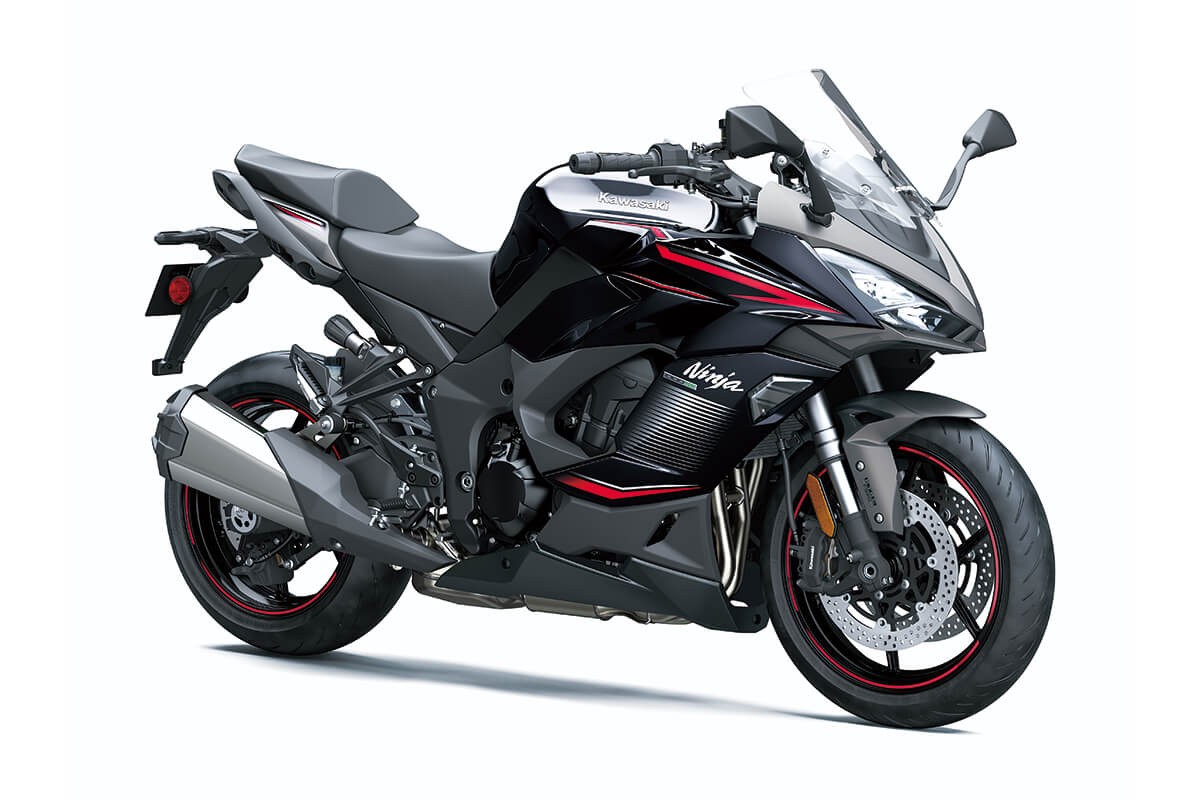 Model Overview </p>General Info
Main Specs
Competitors 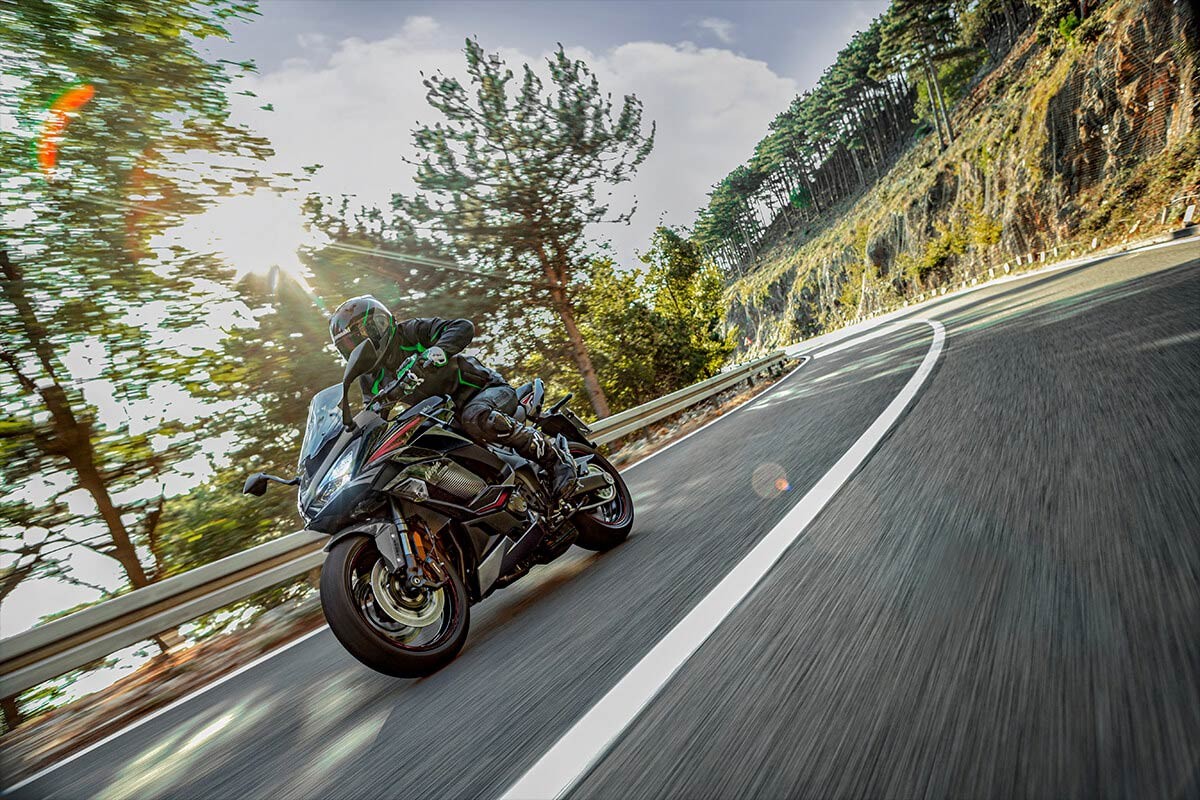 2022 Kawasaki Ninja 1000SX Specifications ENGINE Engine1,043cc, 4-stroke, In-Line Four, DOHC, 16-valve, liquid-cooledPower124.3 hpBore x Stroke77.0 x 56.0mmCompression Ratio11.8:1 Fuel SystemDFI® w/38mm Keihin throttle bodies (4) and oval sub-throttlesStarterElectricElectronic Rider AidsKawasaki TRaction Control (KTRC), Kawasaki Intelligent anti-lock Brake System (KIBS), Power Mode, Kawasaki Corner Management Function (KCMF), Kawasaki Quick Shifter (KQS) (Up-Down)DRIVETRAIN ClutchTransmission6-speed, Manual, Return ShiftFinal DriveSealed chainCHASSIS Suspension Front41mm inverted cartridge fork with stepless compression and rebound damping, adjustable spring preload/4.7 inSuspension RearHorizontal back-link with stepless rebound damping, remotely adjustable spring preload/5.7 inBrakes FrontDual 300mm discs with radial-mount 4-piston monobloc calipers and KIBS ABSBrakes RearSingle 250mm disc with single-piston caliper and KIBS ABS Tires Front120/70 ZR17Tires Rear190/50 ZR17Fuel Tank Capacity5.0 galColorMetallic Matte Graphenesteel Gray/Metallic Diablo Black ELECTRICAL IgnitionTCBI with digital advanceSpark PlugsHeadlightLEDTail LightLEDDIMENSIONS Overall Length82.7 inOverall Width32.5 inOverall Height46.9 / 48.2 inWheelbase56.7 inGround Clearance5.3 inSeat Height32.3 inCurb Weight513.8 lb*WARRANTY Warranty12 MonthsKawasaki Protection Plus12, 24, or 36 months 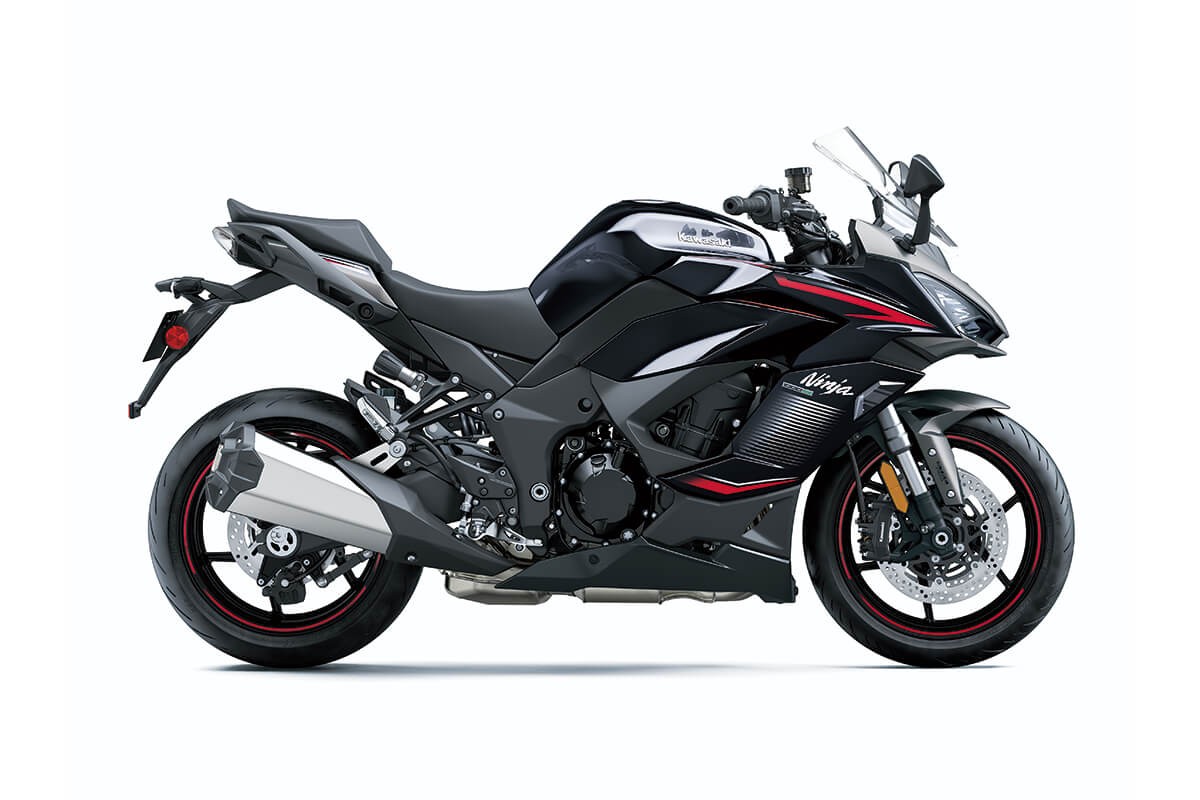 2022 Kawasaki Ninja 1000SX Features Assist & Slipper Clutch Based on feedback from racing activities, the Assist & Slipper Clutch uses two types of cams (an assist cam and a slipper cam) to either drive the clutch hub and operating plate together or apart. Under normal operation, the assist cam functions as a self-servo mechanism, pulling the clutch hub and operating plate together to compress the clutch plates. This allows the total clutch spring load to be reduced, resulting in a lighter clutch lever feel when operating the clutch. When excessive engine braking occurs – as a result of quick downshifts (or an accidental downshift) – the slipper cam comes into play, forcing the clutch hub and operating plate apart. This relieves pressure on the clutch plates to reduce back-torque and helps prevent the rear tire from hopping and skidding. This race-style function is particularly useful when sport or track riding. Economical Riding Indicator Using high-precision electronic control for engine management, Kawasaki models can achieve a high level of fuel efficiency. However, fuel consumption is greatly affected by throttle use, gear selection, and other elements under the rider’s control. The Economical Riding Indicator is a function that indicates when current riding conditions are consuming a low amount of fuel. The system continuously monitors fuel consumption, regardless of vehicle speed, engine speed, throttle position and other riding conditions. When fuel consumption is low for a given speed (i.e. fuel efficiency is high), an “ECO” mark appears on the instrument panel’s LCD screen. By riding so that the “ECO” mark remains on, fuel consumption can be reduced. While effective vehicle speed and engine speed may vary by model, paying attention to conditions that cause the “ECO” mark to appear can help riders improve their fuel efficiency – a handy way to increase cruising range. Further, keeping fuel consumption low also helps minimize negative impact on the environment. Electronic Cruise Control Electronic Cruise Control allows a desired speed (engine rpm) to be maintained with the simple press of a button. Once activated, the rider does not have to constantly apply the throttle. This reduces stress on the right hand when traveling long distances, enabling relaxed cruising and contributing to a high level of riding comfort. Electronic Throttle Valves Kawasaki’s fully electronic throttle actuation system enables the ECU to control the volume of both the fuel (via fuel injectors) and the air (via throttle valves) delivered to the engine. Ideal fuel injection and throttle valve position results in smooth, natural engine response and the ideal engine output. The system also makes a significant contribution to reduced emissions. Electronic throttle valves also enable more precise control of electronic engine management systems like S-KTRC and KTRC, and allow the implementation of electronic systems like KLCM, Kawasaki Engine Brake Control, and Electronic Cruise Control. KCMF (Kawasaki Cornering Management Function) Using the latest evolution of Kawasaki’s advanced modeling software and feedback from a compact IMU (Inertial Measurement Unit) that gives an even clearer real-time picture of chassis orientation, KCMF monitors engine and chassis parameters throughout the corner – from entry, through the apex, to corner exit – modulating brake force and engine power to facilitate smooth transition from acceleration to braking and back again, and to assist riders in tracing their intended line through the corner. The systems that KCMF oversees vary by model, but may include: KTRC (Kawasaki Traction Control) KTRC, Kawasaki’s advanced traction control system provides both enhanced sport riding performance and the peace of mind to negotiate slippery surfaces with confidence. Multiple rider-selectable modes (the number of modes varies by model) offer progressively greater levels of intrusion to suit the riding situation and rider preference. Less intrusive modes maintain optimum traction during cornering. Designed with sport riding in mind, they facilitate acceleration out of corners by maximizing forward drive from the rear wheel. And because Kawasaki’s sophisticated software bases its dynamic analysis on the chassis’ orientation relative to the track surface (rather than relative to a horizontal plane), it is able to take into account corner camber, gradient, etc., and adapt accordingly. In the more intrusive modes (and for some models, in any mode), when excessive wheel spin is detected, engine output is reduced to allow grip to be regained, effectively enabling riders to negotiate both short, slippery patches (train tracks or manhole covers) and extended stretches of bad roads (wet pavement, cobblestone, gravel) with confidence. Power Modes Models equipped with multiple Power Modes offer riders an easily selectable choice of engine power delivery to suit riding conditions or preference. In addition to Full Power mode, one (Low) or two (Middle, Low) alternate mode(s) in which maximum power is limited and throttle response is milder are provided. Smartphone Connectivity Clever technology enables riders to connect to their motorcycle wirelessly. Using the smartphone application “RIDEOLOGY THE APP,” a number of instrument functions can be accessed, contributing to an enhanced motorcycling experience. Vehicle information (such as the odometer, fuel gauge, maintenance schedule, etc) can be viewed on the smartphone. Riding logs (varies by model, but may include GPS route, gear position, rpm, and other information) can be viewed on the smartphone. When connected, telephone (call, mail) notices are displayed on the instrument panel. Riders can also make changes to their motorcycle’s instrument display settings (preferred units, clock and date setting, etc) via the smartphone. And on certain models, it is even possible to check and adjust vehicle settings (such as Rider Mode, electronic rider support features, and payload settings) using the smartphone. ABS (Anti-lock Brake System) Kawasaki ABS systems use front and rear wheel sensors to constantly monitor wheel speed. Should information from either of the sensors indicate that wheel lock has occurred, the ABS ECU directs the pump in the ABS unit to modulate brake fluid pressure (releasing and reapplying pressure so that traction can be regained) until normal operation resumes. ABS offers rider reassurance that contributes to greater riding enjoyment. Horizontal Back-link Rear Suspension Compared to the Kawasaki traditional Uni-Trak® rear suspension, which mounts the shock unit vertically, with Horizontal Back-link Rear Suspension, the shock unit is almost horizontal. The original Kawasaki suspension arrangement locates the shock unit very close to the bike’s center of gravity, greatly contributing to mass centralization. And because there is no linkage or shock unit protruding beneath the swingarm, this frees up space for a larger exhaust pre-chamber (an exhaust expansion chamber situated just upstream of the silencer). With a larger pre-chamber, silencer volume can be reduced, and heavy exhaust components can be concentrated closer to the center of the bike, further contributing to mass centralization. The result is greatly improved handling. 2022 Kawasaki Ninja 1000SX Photos  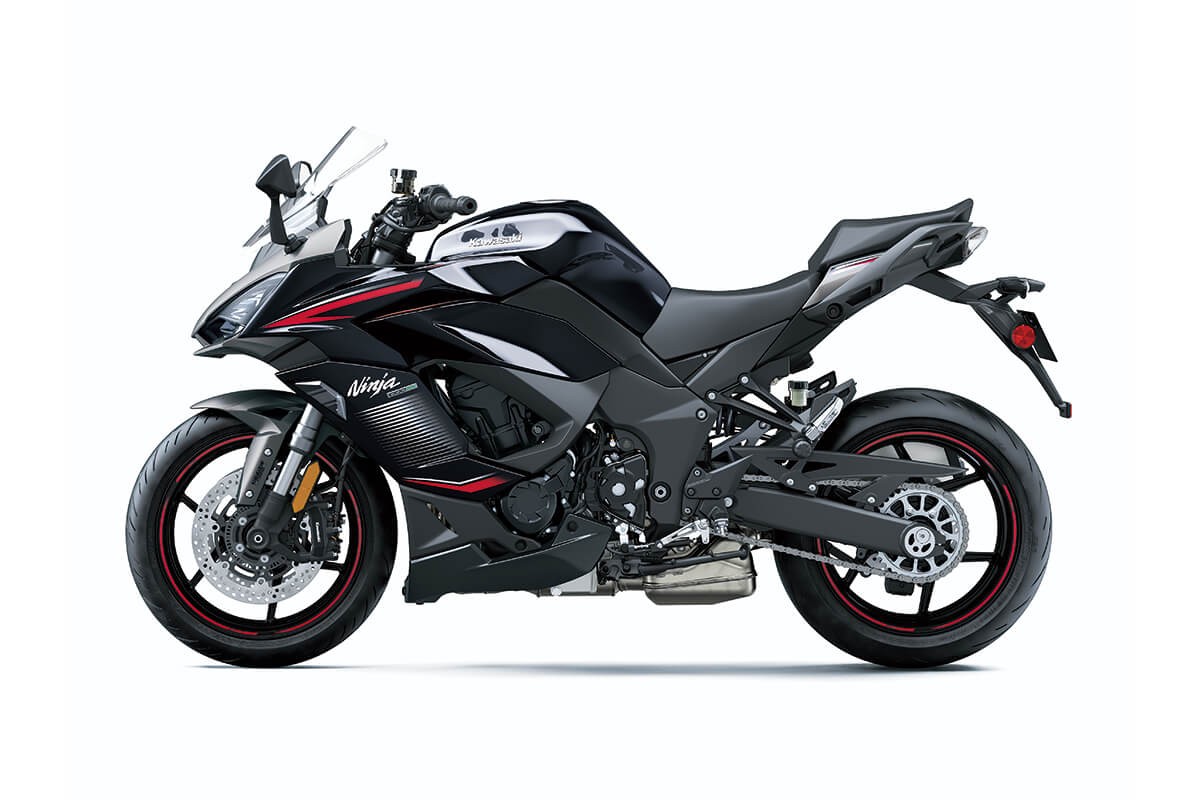  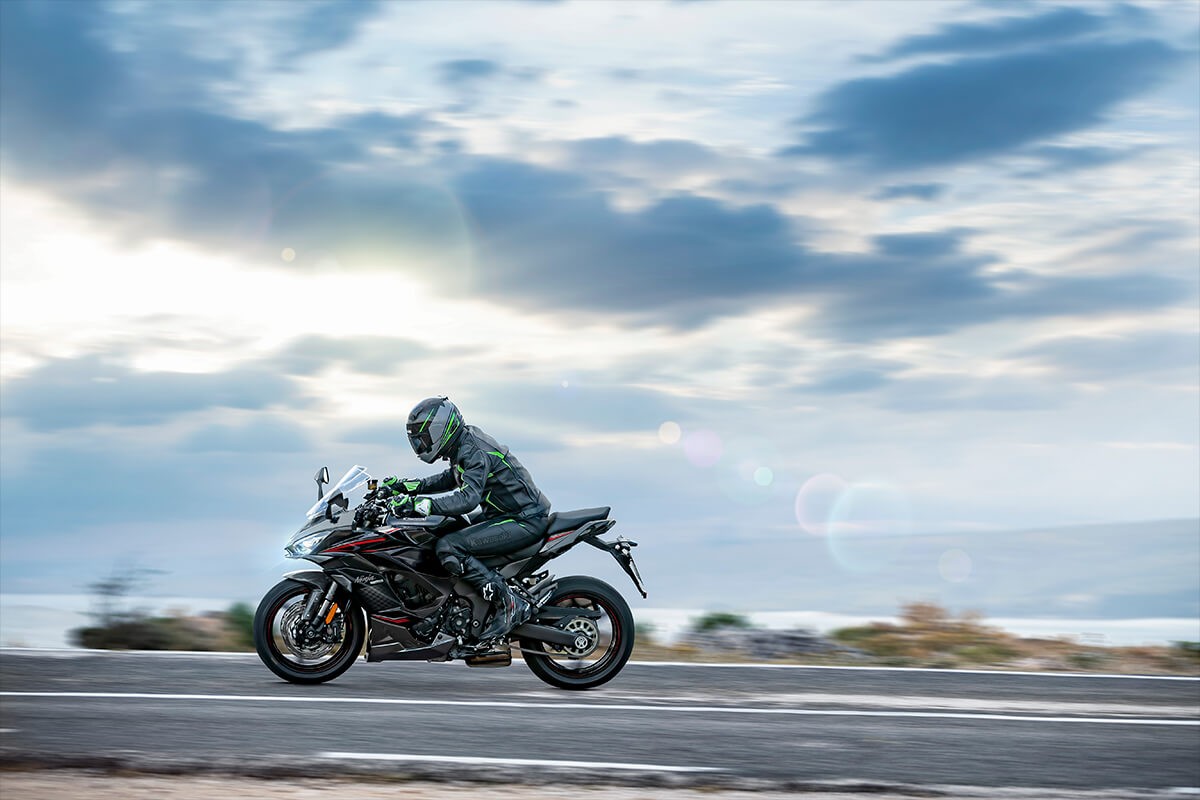  2022 Kawasaki Ninja 1000SX Videos 2022 Kawasaki Ninja 1000SX VideosComparing the 2022 Kawasaki Ninja 1000 SX to the 2022 Suzuki GSX S1000 GT. First ride review. 2022 Kawasaki Ninja 1000 SX in-depth walkaround Links Kawasaki Official Websites Social Media Links The post 2022 Kawasaki Ninja 1000SX [Specs, Features, Photos] appeared first on webBikeWorld.
__________________________________________________
I'm a bot. I don't need no stinkin' signature... |
|
|

|
 |
 Similar Threads
Similar Threads
|
||||
| Thread | Thread Starter | Forum | Replies | Last Post |
| [webbikeworld.com] - 2022 Kawasaki Ninja 650 [Specs, Features, Photos] | Ninjette Newsbot | Motorcycling News | 0 | July 4th, 2022 09:00 AM |
| [webbikeworld.com] - 2022 Kawasaki Ninja ZX-14R [Specs, Features, Photos] | Ninjette Newsbot | Motorcycling News | 0 | July 2nd, 2022 10:14 AM |
| [webbikeworld.com] - 2022 Kawasaki Ninja ZX-6R [Specs, Features, Photos] | Ninjette Newsbot | Motorcycling News | 0 | July 2nd, 2022 10:03 AM |
| [webbikeworld.com] - 2022 Kawasaki Ninja H2 SX SE [Specs, Features, Photos] | Ninjette Newsbot | Motorcycling News | 0 | June 24th, 2022 04:53 PM |
| [webbikeworld.com] - 2022 Kawasaki Ninja H2 [Specs, Features, Photos] | Ninjette Newsbot | Motorcycling News | 0 | June 24th, 2022 04:41 PM |
| Thread Tools | |
|
|